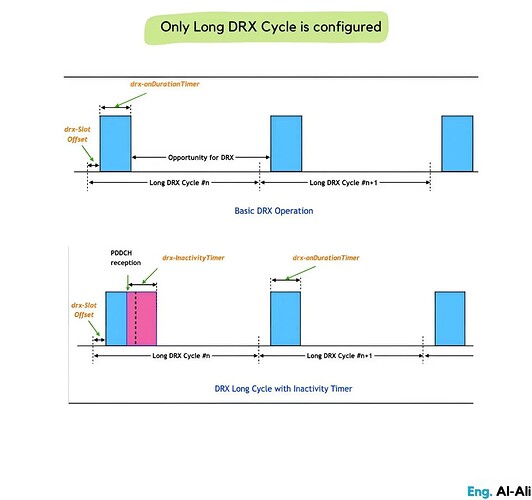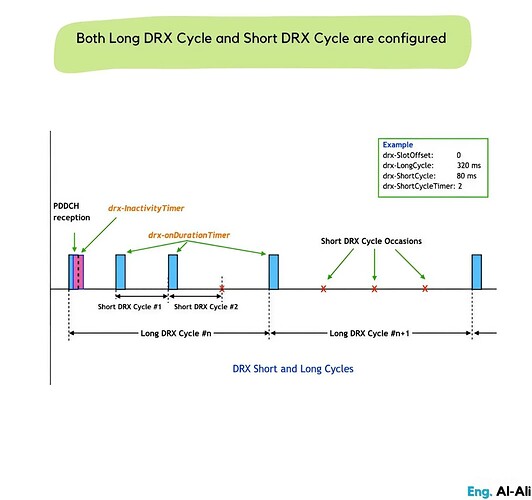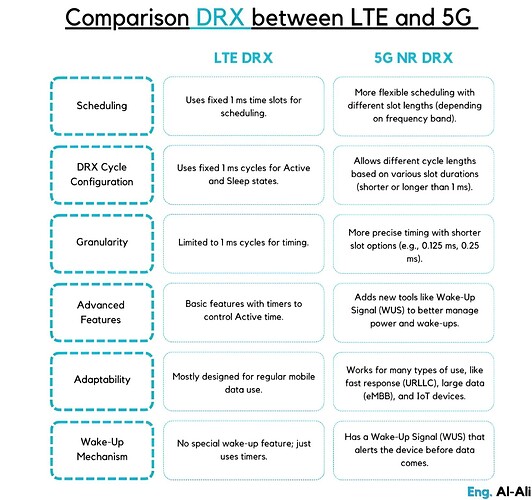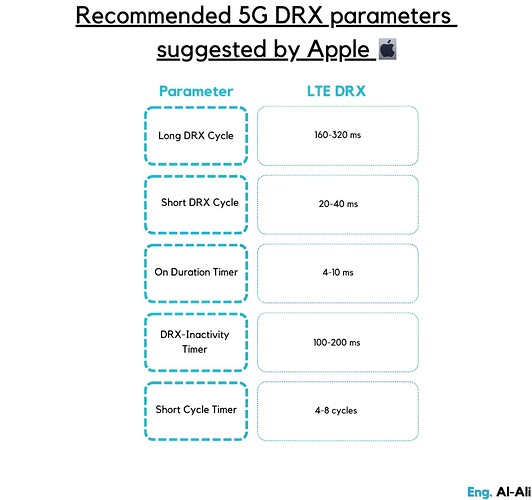DRX in short is a feature that helps save battery power on mobile by allowing them to “sleep” for a while instead of always being active. It works when the UE is connected to the network but not actively sending or receiving data.
Why Use DRX?
- Battery Saving: When a Mobile is connected, it checks for incoming data from the network, which can drain battery power. DRX allows the Mobile to alternate between active and sleep periods, reducing unnecessary power consumption.
- Efficient Resource Use: The network can allocate resources more efficiently to other Mobiles during the Mobile’s sleep times.
How Does DRX Work? DRX cycles consist of two main phases
- On Duration (Active Time): The Mobile wakes up to monitor the network for any downlink control information on the PDCCH. If data is detected, it remains active for longer.
- Off Duration (Sleep Time): The Mobile shuts down its receiver to save battery power and stops monitoring for data until the next On Duration.
Long DRX vs. Short DRX,
There are two types:
1- Long DRX Cycle: Longer sleep times are the default. It’s used when data activity is low.
2- Short DRX Cycle: This is used if the UE recently detected data. The UE wakes up more often to be ready for new data.
‘‘Switching Between Long and Short Cycles’’
The UE can switch from a Long to a Short DRX Cycle if there is recent data activity, allowing it to check for new data more often. If no more data arrives during Short DRX Cycles, it goes back to the Long DRX Cycle with longer sleep times.
What Happens if Data Arrives?
If the UE finds data during the On Duration, it stays awake longer using a special timer called the DRX-Inactivity Timer. This timer resets whenever new data is detected, keeping the UE active just in case more data is on the way. If no more data arrives, the UE goes back to sleep until the next cycle.
Channels Involved in DRX
- RRC : Configures DRX settings (On/Off Durations, timers). It adjusts DRX based on data activity.
- PDCCH : Carries control info that the UE checks during On Duration for DL/UL scheduling. If data is detected, the UE stays awake.
- PDSCH : Used for DL data transfer when the PDCCH scheduling grants are received.
- PUSCH : Used for uplink transmissions after an UL scheduling grant from PDCCH.
Note
DRX started in LTE for power saving and was improved in 5G to better support higher data rates.
That’s it ![]()
Only Long DRX Cycle is configured:
Both Long DRX Cycle and Short DRX Cycle is configured:
Comparison of DRX between LTE and 5G:
Recommended 5G DRX parameters sugeested by Apple:
LinkedIn: ![]()



